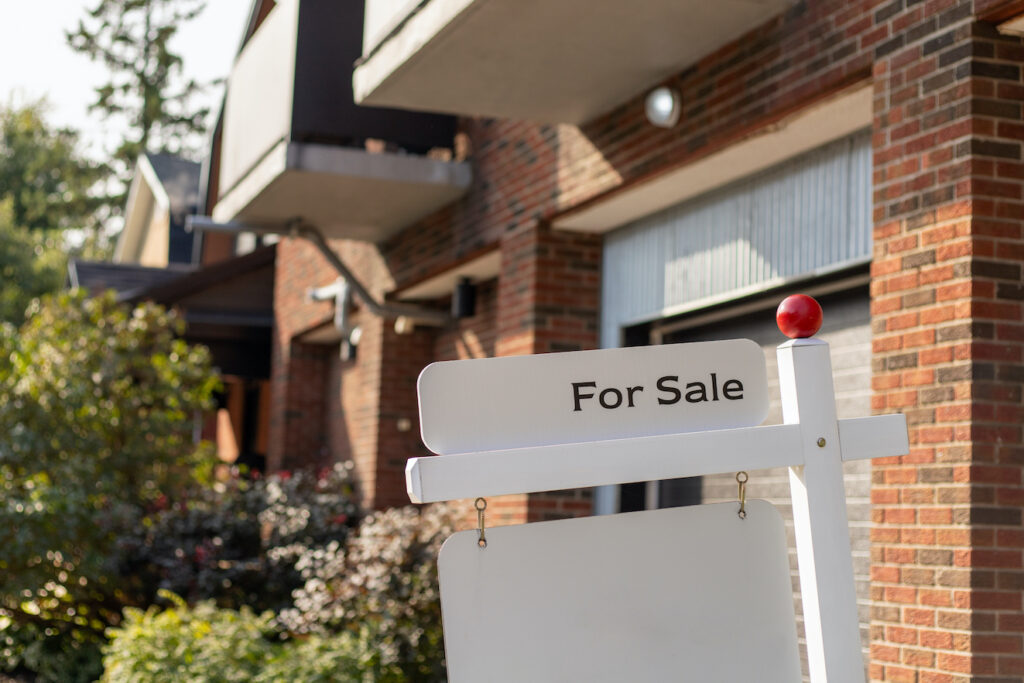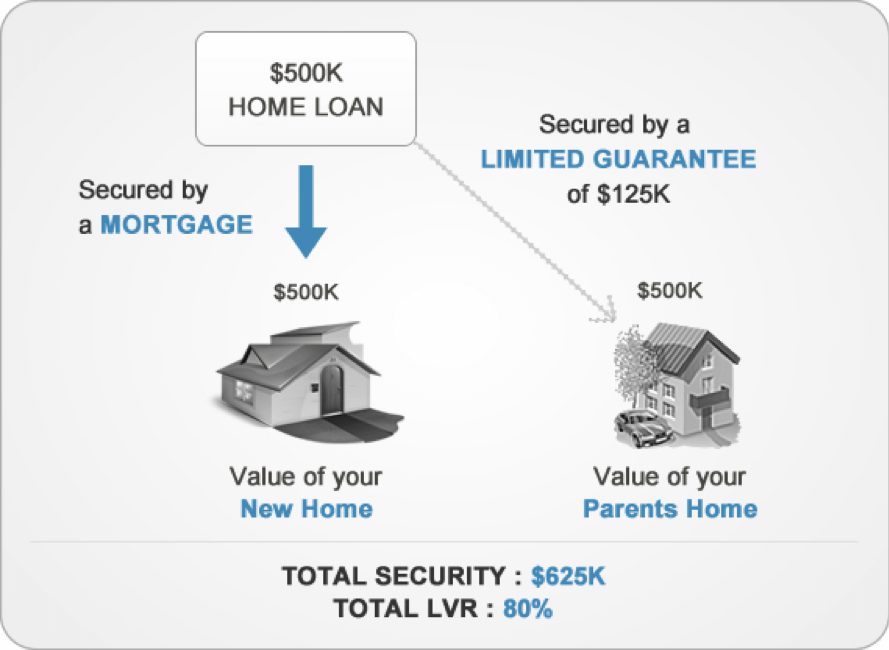Are you looking to upgrade or downsize your home but unsure whether to buy the new home first or sell your existing home? If you buy first before selling, you may have to pay two mortgages for some time. If you sell first before you buy, you will have to pay rent on another property until you find another property to buy. But there is a third alternative… Simultaneous settlement.
In this article, we will explain everything you need to know about simultaneous settlement, which allows you to buy and sell a house simultaneously. We will also include one tip that can save you thousands of dollars.
Let’s dive in.
Quick Summary
- Simultaneous settlement allows you to buy a new home and sell your existing home on the same day
- It avoids temporary housing and paying two mortgages, but is complex to coordinate
- Key considerations are how quickly your home will sell, how much equity you have, and whether to use a guarantor
- Extending the settlement period and bridging loans are alternatives to simultaneous settlement
- Get an experienced mortgage broker to help navigate the process
What is Simultaneous Settlement?
Settlement is the final step when transferring property ownership from the seller to the buyer. It is the stage where you pay the remaining amount of the asking price and are given the keys to your new home. It usually happens weeks (sometimes months) after you have exchanged contracts of sale and paid your deposit.
A simultaneous settlement means arranging for the settlement for the sale of your old property and the settlement of the purchase of your new home to happen at the same time. The deposit for the new home comes from the sale of your old home!
In simple terms, you buy your new home at the same time that you sell your old one.
With a simultaneous settlement, the money from selling your old property goes towards paying off the remaining mortgage, and any surplus will reduce the mortgage on your new home.
Read more: 5 simple steps to settlement.
What Are The Steps Involved?

Simultaneous settlement can be a little tricky to coordinate, so we recommend getting a good mortgage broker.
Here are the steps involved:
- With the help of your mortgage broker, get a pre-approval from your bank to purchase the new home, but on the condition that you will sell your existing home at the same time.
- Put your home on the market. You can get a real estate agent to help you put your home up for sale.
- While your house is being prepared to go on the market, start looking for the home you want to buy.
- Hire a lawyer or conveyancer to help you with the settlement process.
- Once you get an offer for your old home and have gone past the cooling-off period, then put an offer for the new home. If you put in an offer on the new home while the old home is still in the cooling-off period, you run the risk that the buyer may decide they no longer want to purchase your old home when you have already paid a deposit for the new home.
- Arrange for a long settlement period on the sale of your house – even up to 6 months – with the option of bringing it forward as long as you give 4 weeks’ notice. This gives you enough time to negotiate on the new property and then bring forward the settlement on the old property so that they settle simultaneously. It is easier to bring forward a settlement date than to push it further.
- Discharge the mortgage on the old property and establish a mortgage on the new property.
- Register the transfer of title and mortgage with your state authority.
- Congratulations! You can now move from your old home directly into your new home!
Even though we have simplified these steps as much as possible, simultaneous settlement is a very tricky process. It requires experienced mortgage brokers to ensure your paperwork is all on point. The last thing you want is to have your new loan declined on settlement day!
What makes simultaneous settlement tricky?

It’s tricky for a couple of reasons. Number one is the deposit when you’re buying a new home. So when you sign a contract on a new home to buy, you might need to put down an initial deposit (sometimes a thousand dollars) and then a balance deposit, which is usually between 5 and 10% of the purchase price. But it gets complicated because ALL your deposit is coming from the sale of your home, which isn’t going to happen for 90 days.
So what can you do?
The first thing you can do is renegotiate with the agent to see if you can reduce the deposit amount on the balance deposit instead of 5% to whatever you’ve got on hand because those funds aren’t going to be available until you sell your home.
The second option is to borrow money from Mom and Dad, friends, and relatives for that balance deposit.
The third option is looking at a deposit bond. Now, this is something that used to be really common when you didn’t have the deposit funds. It’s a third party that pretty much guarantees that you’re good for the 5% deposit that’ll be paid when you sell your property. It does cost money for a deposit bond and you do need to ask the real estate agent and the sellers for consent to use it. But it can be a good solution if you don’t actually have the cold hard cash in your account today.
Read more: What is a pre-approval?
How Does Finance Work With A Simultaneous Settlement?

So, in the case where you might have bought first and not yet sold your place, how is the bank going to assess your application? With several banks, they can actually make it a settlement condition that your current home sells on or before you move into the new home.
So, in other words, the bank is saying you need to sell your family home before or on the same day you buy the new home. That way, the 20% deposit funds become available, they get put in the account, and that goes towards the deposit of your new home.
Now, the risk with this condition is you can actually buy a property without putting any clauses in the purchase contract saying that your purchase is subject to your existing property selling. Not having this clause when making an offer will help you get your offer accepted.
So when you’re financing, you might make an offer that is subject to, say, 14 days for finance. The bank will approve your loan and put a condition on your finance approval to say that your existing home must settle simultaneously with the new home. There can be a big risk here because everything can fall over if you can’t sell your house in that time.
CAUTION! Why You Need A Sunset Clause
So, when you’re making offers to purchase a property, your solicitor will recommend putting a sunset clause in place. The sunset clause protects you and says that your purchase is subject to your existing property settling. Since the market is very competitive, we’re seeing a troubling trend where buyers are waiving their sunset clause.
So they’re going in to purchase a property and saying we don’t have any conditions or requirements to sell our existing home. They’re running the gauntlet to make sure that they sell their property on or before the purchase happens. As we said, this is a serious risk because if you don’t sell your property before your purchase happens, the bank will not fund you the loan.
Advantages of Simultaneous Settlement

Simultaneous settlement has many advantages:
- There is no need for temporary accommodation. This is one of the biggest advantages because you can move straight from your old home into your new home without worrying about finding a place to rent, staying with friends and family and putting your furniture into storage – these are all issues you face if you buy first. So simultaneous settlement not only saves you money on temporary accommodation but also saves you a lot of hassle.
- You can move on the same day. If you are doing simultaneous settlement, vacant possession of the property is usually granted on the day of settlement (or the next day) . This reduces your removal costs, and you don’t even spend a single night in temporary accommodation.
- You won’t have to pay two mortgages at the same time, i.e. a bridging loan. With simultaneous settlement, you won’t have to take out a bridging loan. You need a bridging loan if you buy a new property before selling the old one. Bridging loans can be expensive and usually come with a time limit of 12 months.
- You can refinance the loan on your existing home and replace it with the loan on your new home in the same transaction, saving you money in transaction fees.
- With simultaneous settlement, you can disconnect and reconnect services from your old property to your new property in one phone call or email.
Read more: 21 easy tips to find the right mortgage broker.
Disadvantages of a simultaneous settlement

A simultaneous settlement also has its disadvantages:
- It isn’t easy. Simultaneous settlement is not something you can DIY. It is a very complex arrangement that usually requires the expertise of a mortgage broker, a lawyer, or a conveyancer to help you with all the legal and financial paperwork.
- Lots of parties are involved – which increases the chances of something going wrong. As the saying goes, too many cooks spoil the broth. You will require payment from the person buying your property, and the seller will require payment from you. This means the buyer’s bank, your bank, and the seller’s bank should have all their requirements met – and we know that each lender has different requirements.
- Your negotiation skills must be on point: If you have stipulated an extended period for the settlement of your old home, then if you find your new place early, you will have to negotiate to reduce the settlement period with your buyer. Your buyer may not always agree to this unless it is stipulated in the contract. If you buy first before your old home is sold, you will have to negotiate for ‘subject to completion of sale’ of your old property, and the seller may not agree to this. You may need to compromise on price. Since timing is everything when it comes to simultaneous settlement, you may have to sell your home for a little lower than desired or buy the new home a little higher than planned.
- The settlements rely on each other. If there is a problem with one of the processes, it can cause delays, which may mean lots of money in penalties and, in extreme cases, the loss of the deposit on your new property. It is also possible that the other party may be involved in their own simultaneous settlement!
All these disadvantages make it very necessary for you to get an experienced mortgage broker because a single mistake can cost you thousands of dollars.
What Is The Best Option For Me?
Before deciding whether or not to go the simultaneous settlement route, you need to ask yourself these three key questions:
- How easy will it be to sell my house?
- How much equity do I have in my home?
- Should I use a guarantor?
1, How easy will it be to sell my house?

If you’re not sure about the market conditions where you currently live, it’s best to have a quick chat with a real estate agent. They’re always happy to appraise your home and tell you how much they can sell your house for and potentially how quickly they can do it. You definitely want to have a pretty frank conversation with them and let them know you are planning to buy a house at the same time, so they should give you an honest answer. Can they sell it in 30 days, 60 days, 90 days or 6 months? How quickly are properties turning over in the suburb? If they say it’s a bit of a sluggish market and it’s going to take 6 months, you need to take this into consideration because if you’ve signed a contract on a new home, you will need your old home to settle at the same time or before you move into the new home.
The major downside of selling first is that you might end up selling your house faster than you thought and then having to move into a rental because you haven’t quite found a new home. It’s worth talking to your parents, friends, or family to find out if you could temporarily move in with them in case you sell your house really fast.
2. How much equity do I have in my home?

If you have enough equity in your house, you can consider buying first and then selling. In this case, you will be reliant on releasing that equity to cover your deposits and required expenses. If there isn’t enough equity in the property, you could be up for costs such as lenders mortgage insurance, which you need to factor in when doing your calculation.
Also, when you buy first, you’ll have your existing property there, so you need to be able to afford the repayments on both the new and existing properties, especially if you’re not planning on renting out the existing property anytime soon.
The big advantage of buying first is it puts you in the control seat when it comes to selling your home. If, for example, you’ve bought a new home and negotiated a longer settlement, say 90 days, it gives you three months to sell your current home. Then, because you’ve bought first, you know the date when your new home settles (in 90 days). When someone wants to buy your home, you can tell them settlement will be in 90 days because you want everything to line up and settle on the same day.
Another advantage is you won’t have to move into a rental property in the short term. So you can buy the home that you’re really after. You can take your time because there’s no time pressure between when you’ve got your existing property sold and when you buy the next one, so you can move straight in.
As we mentioned, when you buy first, you need to be in a pretty strong financial position because you’re potentially supporting two mortgages—your existing home before you sell it and the new one once you move in. So make sure your mortgage broker runs the numbers, and you get comfortable because you might be paying two mortgages for a month or two.
3. Should I use a Guarantor?

If you don’t quite have enough equity in your home, have a mum or dad that can help, and you don’t want to pay mortgage insurance, you can consider getting a mom or dad to go guarantor on your property.
So, if you are planning on selling your existing property in the short term, you can use a parental guarantor in the medium term to help get in that property, and then, once you’ve sold your existing home, you can pay down the debt and remove the guarantors. This is a good option if mom and dad are happy to help and understand that it could be a short-term solution. However, there are lots of risks with guarantor loans, so definitely speak to your mortgage broker. Some banks will only do guarantor loans for your first home, not a second and not an investment property.
Bridging Finance As An Alternative To Simultaneous Settlement

Instead of a simultaneous settlement, you may consider a bridging loan. A bridging loan is a loan that will allow you to buy a new house before selling the existing one without necessarily making more payments on the total loan.
You have up to 12 months to sell the existing property. The good thing about bridging finance is that, depending on the bank, you don’t have to make any repayments on the bridged amount for the bridging period. So what that means for you is that you can actually have the repayments capitalized or added on top of the existing loan during the time that you’re looking to sell, so there’s not so much of a financial burden.
The downside is that you pay higher interest rates on bridging loans. The biggest issue for buyers who have bought in the last two or three years and are looking at upgrading is that with a bridging loan, you need to have at least 60% equity or more in your home. So, if you’ve only got 20 or 30%, it’s pretty unlikely bridging is going to work in your situation.
Another thing to note is that bridging loans must be done with one bank. So if you are banking with a smaller bank, for example, that doesn’t do bridging loans, in that 30 or 60 days, you actually have to refinance your home loan to the new bank. They’ll also take a mortgage on the new house and move things around. So, just be aware of that because you sometimes need 6 or 7 weeks for refinancing, and there can be complexities that can cause issues with your new home.
Read more: How does bridging finance work?
Extending The Settlement Period (avoid this mistake)
As we mentioned above, it is common for homebuyers who go the simultaneous settlement route to have very long settlement periods of up to 6 months.
There are two ways to do this:
- Option 1: You can sell your old home before finding a new one and then have the option to bring forward settlement when you find the right property so that both properties settle on the same day. The risk with this is that if you don’t find the right property in time, you may have to move to temporary accommodation. This is a better risk than option 2.
- Option 2: You buy your new home before selling the old one and then have a settlement of 6 months on the new home with the option of bringing it forward when you sell the old home. This is very risky because if you don’t sell your old home in time, you might lose the deposit on your new home – that’s thousands of dollars! So we don’t recommend using this option.
Frequently Asked Questions
A contemporaneous settlement is the same as a simultaneous settlement; it just means the settlement of both the home you are selling and the home you are buying has to happen at the same time, on the same day.
If you buy first, you will have to pay for two mortgages for some time, which may be expensive. If you sell first, you may need to find alternative accommodation until you buy the new house, which can take some time.
This is where simultaneous settlement comes in handy.
The best tip is to extend the settlement period on the house you are selling or on the house you are buying.
A bridging loan is a loan you take out to buy a new property while selling your current one. In simple terms, a bridging loan means that you can still have your existing home and get a loan on the new one. This means you will pay interest on 2 mortgages until you sell your old home.
In general, you need a very high income and lots of equity in your existing property to be able to take out a bridging loan. If your lending is over 70% of your property LVR, you won’t be able to take out a bridging loan.
With a simultaneous settlement, the money from selling your old home will pay for the mortgage, and the remainder will reduce your new loan. So, instead of having 2 loans (as is the case with a bridging loan), you will have only 1 loan.
If the buyer of your home can’t get financing approved or has some other issue that delays settlement, it can derail the purchase of your new home too. That’s why it’s critical to keep your lawyer and mortgage broker in the loop so they can anticipate problems and work to resolve them before the settlement date.
While you legally own the home once settlement goes through, it’s customary that the seller has until 5pm on settlement day to fully vacate. So most people plan their move for the following day. Discuss the precise timing with your lawyer so you’re not left scrambling.
It’s always wise to do one last walkthrough of the property before settlement to make sure it’s in the same condition as when you made your offer. You want to check that all fixtures and appliances are intact, and that the seller has removed all their belongings. If there are any issues, raise them with your lawyer immediately.
The settlement date is negotiated as part of the contract of sale. It’s often 30, 60 or 90 days from when contracts are exchanged. As the seller, you want to push for a longer settlement so you have time to find a new house. As the buyer, a shorter settlement is usually preferable.
If settlement is approaching and you haven’t found a suitable new property, you may need to arrange an extended settlement with your buyer. This requires a formal variation of the contract, which your lawyer can help with. You may need to compensate the buyer, e.g. by paying their rent for the extended period.
Next Steps And Getting Your Home Loan
Simultaneous settlement can make moving from your old home to your new home quite smooth. However, the process needs to be handled with much extreme care…
Our team at Hunter Galloway is here to help you buy a home across Australia.
Unlike other mortgage brokers who are just one-person operations, we have an entire team of experts dedicated to helping make your home loan journey as simple as possible.
If you want to get started, please give us a call on 1300 088 065 or book a free assessment online to see how we can help.







 Start again
Start again










